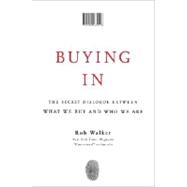
| Introduction | p. xi |
| The desire code | p. 1 |
| The Pretty Good Problem | p. 3 |
| The Straw Man in the Gray Flannel Suit | p. 21 |
| Rationale Thinking | p. 35 |
| Ignoring the Joneses | p. 51 |
| Murketing | p. 71 |
| Chuck Taylor Was a Salesman | p. 79 |
| Rebellion, Unsold | p. 96 |
| Click | p. 115 |
| Very Real | p. 134 |
| The Murkiest Common Denominator | p. 145 |
| The Commercialization of Chitchat | p. 165 |
| The Brand Underground | p. 189 |
| Invisible badges | p. 209 |
| Murketing Ethics | p. 215 |
| What's the Matter with Wal-Mart Shoppers? | p. 230 |
| Beyond the Thing Itself | p. 249 |
| Acknowledgments | p. 263 |
| Additional source notes | p. 265 |
| Index | p. 275 |
| Table of Contents provided by Ingram. All Rights Reserved. |
The New copy of this book will include any supplemental materials advertised. Please check the title of the book to determine if it should include any access cards, study guides, lab manuals, CDs, etc.
The Used, Rental and eBook copies of this book are not guaranteed to include any supplemental materials. Typically, only the book itself is included. This is true even if the title states it includes any access cards, study guides, lab manuals, CDs, etc.
Excerpted from Buying In: The Secret Dialogue Between What We Buy and Who We Are by Rob Walker
All rights reserved by the original copyright owners. Excerpts are provided for display purposes only and may not be reproduced, reprinted or distributed without the written permission of the publisher.